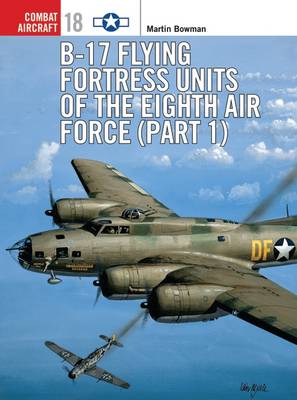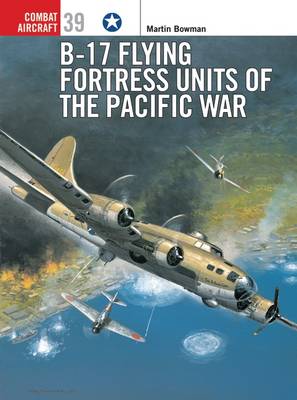Osprey Combat Aircraft
3 primary works
Book 9
The second volume in the trilogy of Combat Aircraft titles devoted to de Havilland's 'wooden wonder', this book focuses on the Mosquito fighter/fighter-bomber variants, and their users. From its earliest development phase, the aircraft was considered as much a fighter as a bomber, and this was duly reflected when the original 1940 Air Ministry order for 50 Mosquito bombers was modified to 20 bombers and 30 fighters. This volume is the first of its kind exclusively dedicated to the fighter/fighter-bomber variants of de Havilland's classic wartime aircraft.
Book 18
B-17 Flying Fortress Units of the Eighth Air Force (part 1)
by Martin Bowman
Published 17 April 2000
The Boeing B-17 has come to epitomise the American war effort in Europe, the huge four-engined heavy day bomber taking the fight to Germany from the late summer of 1942 through to VE-Day. The primary operator of the Flying Fortress in Western Europe was the 'Mighty Eighth'. This volume, which is the first of two dealing exclusively with the 'Mighty Eighth', covers the 15 Bomb Groups of the First Air Division, each of which controlled four squadrons. The evolution of the force is traced through first-hand accounts of those individuals that took part in the action.
Book 39
The B-17 saw combat in the Pacific from the moment a formation of these bombers arrived at Pearl Harbor during the midst of the 7 December 1941 Japanese attack. By the end of the war, SB-17 rescue craft were saving combat crews in the waters off Japan. This book reveals why, to the public, the Flying Fortress was better known than the Spitfire, the Boeing 747, or Lindbergh's Spirit of St Louis. The name recognition enjoyed by the B-17 was that company's reason for creating B-17 Steak Sauce and Osprey's reason to round out the saga of this great wartime aircraft.


